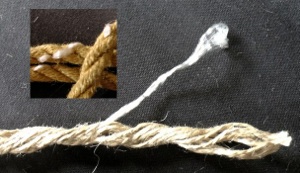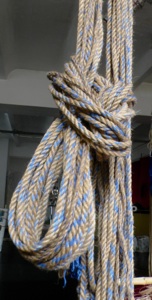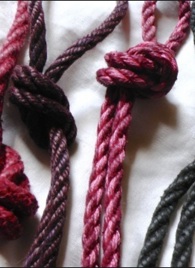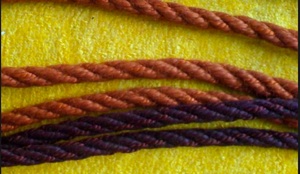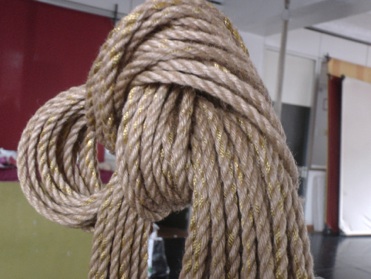You can reinforce jute, hemp and other natural fibre ropes with various synthetic or semi-synthetic fibres: rayon, polyester, dyneema, spectra, to name a few, as long as you can determine the correct length of the yarns so the elasticity of the added fibre doesn’t compromise the structure of the rope.
When you make your own rope, the easy option is to add one or more reinforcing yarns to the bunch of natural fibre yarns, and simply twist them together into a strand. Just make sure that those added yarns are under the same tension as the natural fibre yarns; the method shown here makes it easy.
The best way to find out, in my experience, is to try and see what you get.
Below are some sample of reinforced jute ropes, as well as 2 flax ropes:

